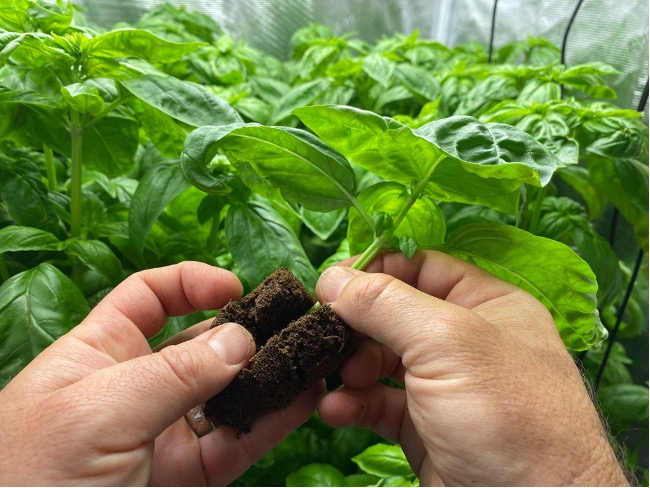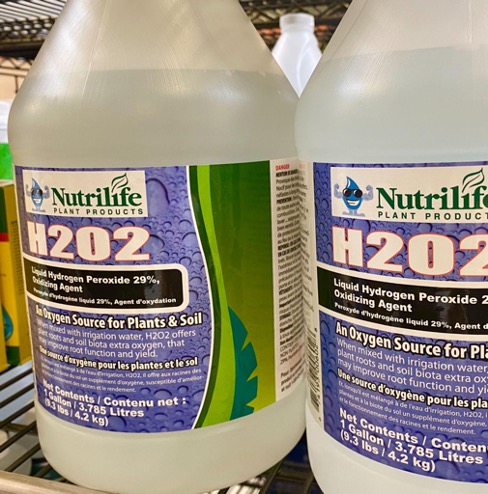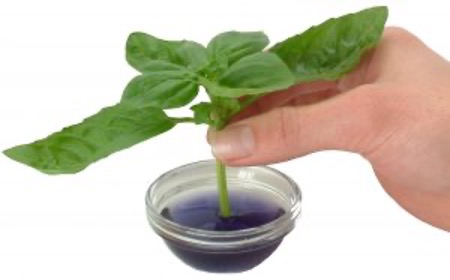-Mike Weeks-
This is one of our Top 15 most popular articles based on customer feedback and engagement. Originally published in May 2018, it has been updated with new product plugs and images. As always, please leave us your comments below!
When it comes to taking plant clones, even experienced growers can experience frustrating challenges. Oftentimes, this is just a matter of developing bad habits in the delicate process that ultimately leads to failure. This article will point out some of the most common mistakes we see and will offer pro tips to avoid them for future cloning success.

Healthy Plant Stock
The first step in producing robust clones is to start with a healthy stock plant (the plant you will cut from). Your “mother” plant should have strong genes, be free of pests or diseases, and should not be displaying any symptoms of deficiencies or stress. The plant should also be large and mature enough to support taking cuttings from. Generally speaking, the best time to take a cutting is when the plants are actively growing. Sometimes we are forced to take a cutting while a plant is in the flowering stage but doing so will prolong the growth of the cutting.
PRO TIP: Spray your stock plant with seaweed and fulvic acid a few days before taking cuttings. This will prime the plant to hold on to nutrients longer, giving the cutting a better chance to survive in the fragile rooting environment.

Ensure Proper Moisture
Another common mistake growers make is keeping their media too wet. Moisture and humidity are key in cloning, but wet is not good. Wet media lowers the oxygen levels in the media, which usually leads to rotting stems. Two of the most common types of media used in cloning are rockwool and starter plugs. Rockwool is preferred for hydroponics but could be used in soil too, while starter plugs can be used in both. Starter plugs are preferred because of their ability to withstand an even amount of moisture. While they come pre-moistened, I give them a few squirts of water directly to the top before placing my cuttings. Rockwool is dry off the shelf and will need to be soaked in a slightly acidic water solution (5.5 pH is ideal) before use. After soaking, the excess water will need to be squeezed out which will pull more air into the media and balance the water/air ratio. The goal is to have evenly moist media. Remember, oxygen is key – never leave your media sitting in water. The Grodan Gro-Smart Tray elevates the rockwool off of the bottom of your flat tray, allowing you to fill the tray with water without soaking the rockwool.

Keep it clean!
Maintaining a clean work environment with sterile cutting tools and equipment is another important practice. While some growers may prefer to buy new humidomes and trays every time they take clones, that is the less environmentally-conscious path and can be avoided by instead cleaning with a 15% bleach solution or food grade hydrogen peroxide. The stronger concentration will be needed for water cloners that contain hard to reach surfaces inside pumps and manifolds but a 3%-4% solution works fine for surfaces. We also recommend keeping a bottle of isopropyl alcohol on hand for soaking and cleaning scalpels and other cutting tools. These cleaning practices are especially important if you are using hydroponic cloners like the EZ-Cloner or Superponics SuperCloner. Bacterial buildup is perhaps the number one cause of failure in these systems.

Temperature
Bacterial growth is brought on by increased temperatures so it is critical to have full control over your grow room climate if you want to produce healthy cuttings. Problems often occur in the summer when room temps reach 80 degrees or above. The ideal temperature for a space is around 75 degrees with humidity in the 60 to 80% range. There are a number of air-cooling options on the market and choosing one will be determined by the size and layout of your space. For cooler spaces, we highly encourage folks to use heat mats during the winter, but be mindful not to “cook” your clones. You can add a buffer between the heat mat and the tray by elevating it an inch or so or by positioning another flat tray upside down below.
Proper Lighting PAR
Over-lighting a fresh cutting can easily cause it to stress and flop. Soft lighting such as that from a single T5 (if going over a single tray) is sufficient since we are trying to minimize water transpiration from the leaves of the young cutting. The Super Sprouter Nanodome is a great example of an ideal set-up. If using a multiple-lamp T5 unit, position the light higher than you would with single T5 fixtures (roughly 36”above the plants). This will ensure that you don’t overlight the fresh clones, and will also increase your cloning square footage.

Fresh Rooting Gel (or Liquid)
Your rooting solution should be fresh for best results. A gel that has separated and no longer appears consistent has more than likely gone bad and should be discarded. Using an old gel or liquid can actually do more harm than good. It is also good practice to pour off what you think you may use into a separate container like a shot glass or floral stem, and use that to dip your cuttings into. Never dip cuttings into the bottle or container as that will increase the chances of contamination.

Let them ROOT!
Lastly, while we all get curious and want to check to see if your clones have produced roots, do not disturb them for at least five days. This means not opening the humidome or picking up the cuttings as doing so could delay the process. Patience is key when it comes to success.
We hope that these simple and versatile tips are helpful for not only cannabis growers as the outdoor season kicks off but also for anyone working with propagation. Our customers come to us with questions on taking cuttings of Grandma’s roses, a prized lilac, rare houseplants and more!

Leave a Reply